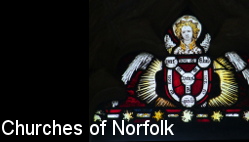| |
|
St
Stephen, Norwich St Stephen is the odd one out of Norwich's
big medieval churches. A great sprawling beast, unkempt
on its sloping site, it has none of the Perpendicular
precision and politeness of St Andrew or St Peter
Mancroft, or the repose of the identikit smaller churches
whose parishes pack central Norwich like Larkin's squares
of wheat. The offset tower, forming what is effectively a
three-storey porch at the west end of the north side, is
unique among larger medieval churches in East Anglia, and
by the time you get to the east end of the north aisle,
there is so much below floor level that the aisle is
almost two storeys high. The elaborate transept, and the
stone facing of clerestory, chancel and tower, give a
sense of a building that has been cobbled together, a
vast labyrinthine structure out of the pages of Gormenghast,
perhaps.
When I first visited St Stephen about twenty years ago I
had the devil of a job trying to see inside. Unusually
for a large medieval church in a city centre, though not
unusually for Norwich I'm afraid, it was hardly ever
open. When I did finally enter the building it was to see
St Stephen in the dusty last days of its old sleepy
incarnation. The church had found itself at one of the
entrances of Norwich's new massive identikit shopping
mall, the Chapelfield Centre, and its graveyard has
become a walkway to the doors. Suddenly, it needed to
awaken from its slumber.
Coming back in 2019 I stepped down as before from the
street into the great porch, which is long enough for its
vaulted ceiling to have two large bosses at its
junctions. The first shows the martyrdom of St Stephen,
two figures above slamming large stones down onto the
unfortunate proto-martyr's head. The other is more
curious. A figure on the left wearing a crown or possibly
a martyr's laurels holds his cloak, while on the left a
man reaches around to pull a woman away from a massive
devil standing at the top of a pillar. Because St Stephen
is so often paired with St Lawrence, this is generally
assumed to be St Lawrence - but doing what? Rescuing a
soul from the devil, perhaps?
There was a church here in the 14th century, and the
ground plan was probably similar. What we see today
externally is almost all the work of the early 16th
century, a large late medieval church on the eve of the
Reformation. Indeed, there is some evidence that the nave
was not finished until the reign of Edward VI, which may
explain why they stopped putting angels on the hammerbeam
corbels. The curious detailing on the tower is probably
the result of a remodelling in the early 17th century.
When I'd first been this way I remember that I entered a
fairly gloomy interior, but as my eyes became accustomed
to the light there was inevitably a comparison with
another very late medieval church of broadly similar
size, Lavenham in Suffolk, particularly in the tracery of
the arcades. There is no break between the nave and
chancel, a fine hammerbeam roof stretching away into the
distance.
St Stephen had undergone a wholesale restoration by
Diocesan architect Richard Phipson in the 1870s. Phipson
was not a bad architect, but he tended to observe the
letter of medievalism rather than the spirit. In
addition, Phipson liked to design for High Church
worship, and in the 19th Century St Stephen was very much
in the Low Church tradition. But in the first decades of
the 21st Century, this church underwent a major
reordering, and today is full of light and colour, and
devoid of Phipson's dour furnishings. The nave was
converted into an activity area, and the west end given
kitchens and the like. A new 'Area of Worship' was built
into what is now the chancel, a semi-circle of chairs put
out to face the screen that hides the sanctuary where the
toilets were installed. This reordering was in no small
way due to the presence of the Chapelfield shopping
centre, for suddenly the church found itself engulfed by
crowds scurrying through to the shops. The building is
now open every day, glass doors replacing the old wooden
ones at the west end, and the west end of the nave has
been turned into a café. These two photographs show the
view east before and after the 2007 reordering.
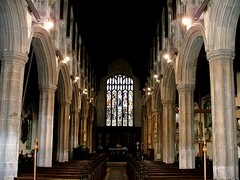 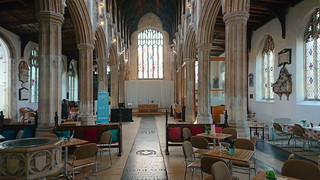
This is a
good setting for the large range of memorials from the
17th to the 19th centuries that flank the aisle walls,
set between the windows and peering out into the light.
Mostly they are to local worthies, and it is no surprise
that such a central and prominent parish has provided
many mayors of the city. The proximity of the hospital
meant that this also came to be regarded as the doctors'
church, and several of the tombs have medical imagery -
snakes and staffs, and the like. The 1812 memorial to
Elizabeth Coppen is worthy of note for it is one of only
a handful in Norfolk which was made out of artificial
Coade stone.
But there
are some enticing medieval survivals, and St Stephen's
great treasure is its range of brasses. There are no less
than nine fine figure brasses, including several pairs.
The loveliest is set in a little box under a cover behind
the organ. The floor has been raised here, but you can
take off the trapdoor and see beneath it a pretty little
brass of a lady. Curiously, the inscription tells us that
it is Elenor Buttrey, last Prioress of Campsey Ashe Abbey
in Suffolk, but I don't think that can be right. The
figure looks at least a hundred years earlier (Prioress
Buttrey died in 1547, at the start of the
ultra-protestant reign of Edward VI) and in addition to
the style of her dress, there are two little pilgrims
sitting on the ground at her feet, telling their
rosaries. It is exquisite, but it would have been
anathema to the early Anglicans, and so I think that this
inscription and figure did not originally belong
together. Other brasses are to members of the Brasyer,
Cappe and Mingay families, who provided mayors of Norwich
in the 15th and early 16th centuries. The Brasyers are
famous in bellringing circles because they owned
Norwich's main bell foundry, and produced many East
Anglian bells that are still rung today. The figures are
set in the sanctuary and at the far west end of the nave.
Phipson set the font at the entrance to the north
transept, creating a kind of baptistery, but it has now
been returned to the west end of the nave. This is now
the setting for some of St Stephen's fine 20th century
windows. In the early 1950s, Alfred Wilkinson created a
sequence of scenes from the life of Christ that are set
here and in the south aisle depicting the nativity, the
crucifixion and the resurrection. Wilkinson may also be
responsible for the war memorial window, which includes a
depiction of Norwich Cathedral. But look up, and see
something from a previous civilisation, for the north
aisle retains its canopy of honour to a vanished altar
that was once here.
There is actually a fair amount of very late medieval
glass in the vast east window, including figures of St
Christopher and St Anne as well as donors, but it is
mostly fragmentary, and mixed in with later continental
glass and some 19th century glass. The overall effect is
quite pleasing. It was all removed during the war, which
is why this window did not suffer the fate of the windows
in the aisles and at the west end. The areas enclosed as
a meeting room at the east end of the south aisle icludes
a royal arms for Henry VIII impaling those of Jane
Seymour, his third and favourite wife to whom he was
married for just over a year in 1536-7, and who was the
mother of Edward VI.
A plaque to Walter Chapman Morgan, a son of the rector
and a lieutenant in the 8th Battalion of the Norfolk
Regiment, records that he was killed at Delville Wood on
19th July 1916. This was poignant for me, as my own
great-grandfather Arthur Page was killed in the same
place in the early hours of the following morning.
Something to think about as I stepped out into the
sunshine of early September. As part of the reordering,
the parish planned for most of the gravestones to the
west of the church to be leveled and the area to be
landscaped, but fortunately Norwich City Council's
planning committee rejected this and the gravestones were
retained. It is perhaps a mark of how quickly fashions
change that surely nobody would think of suggesting such
an action today.
Simon Knott, December 2019
Follow these journeys as they happen at Last Of England
Twitter.
    
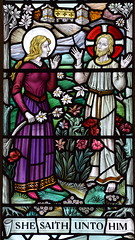  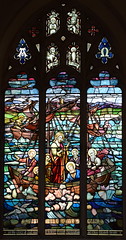 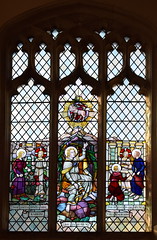 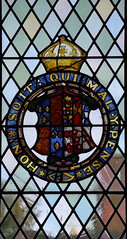
  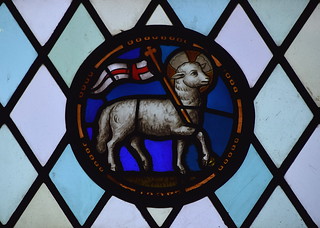
    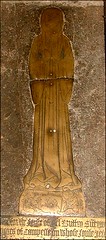
  

|
|
|
